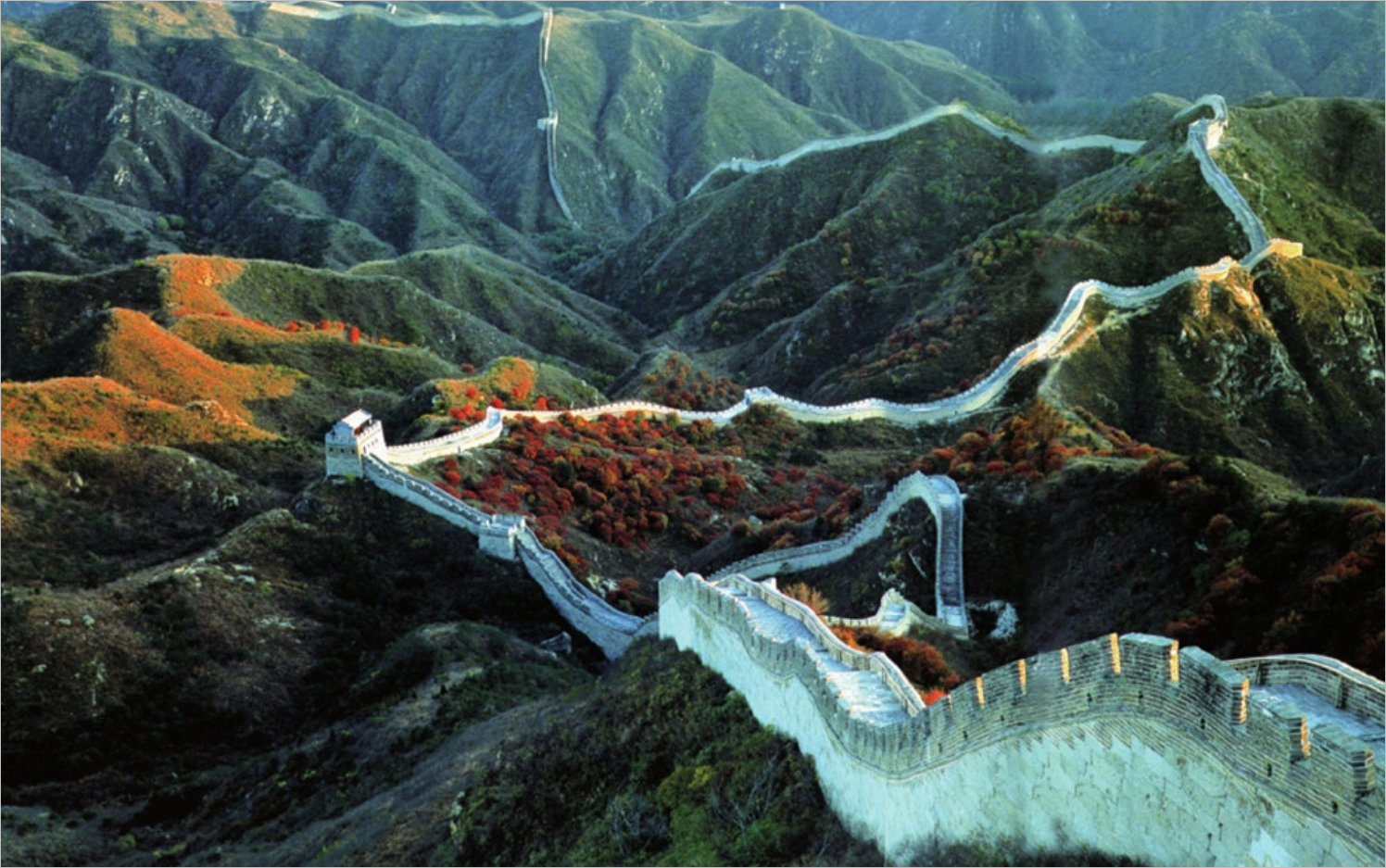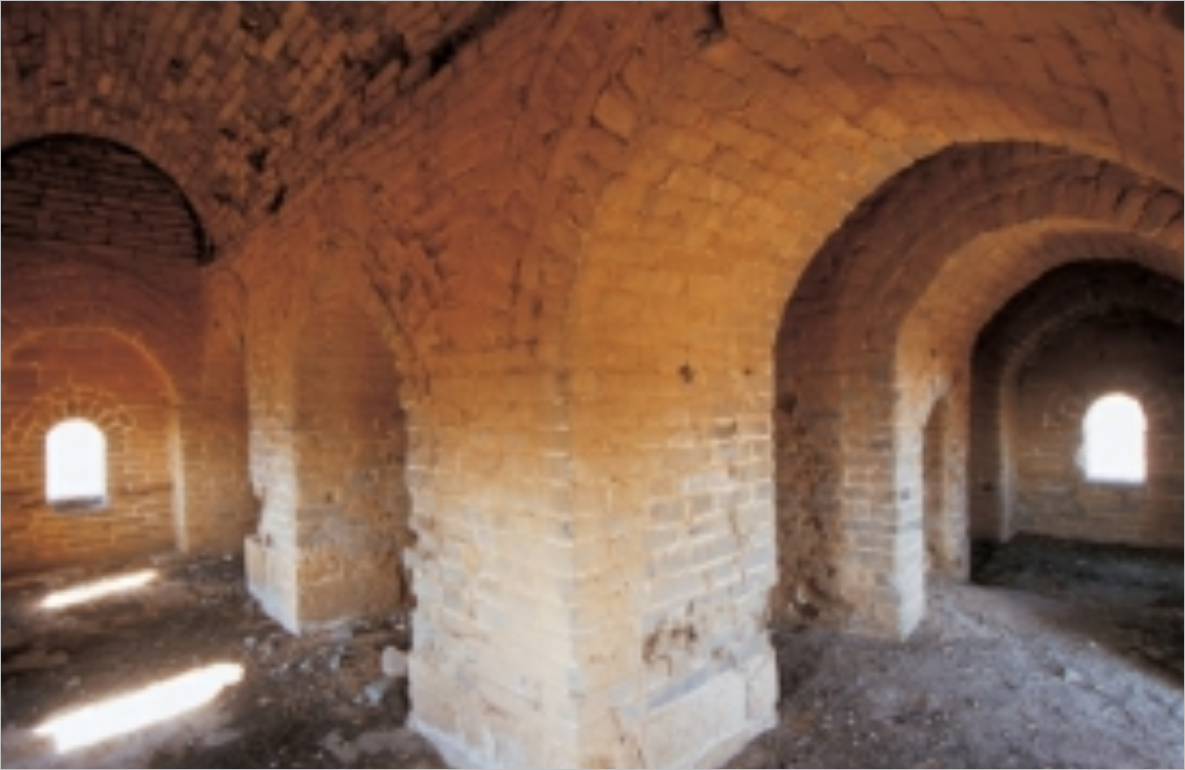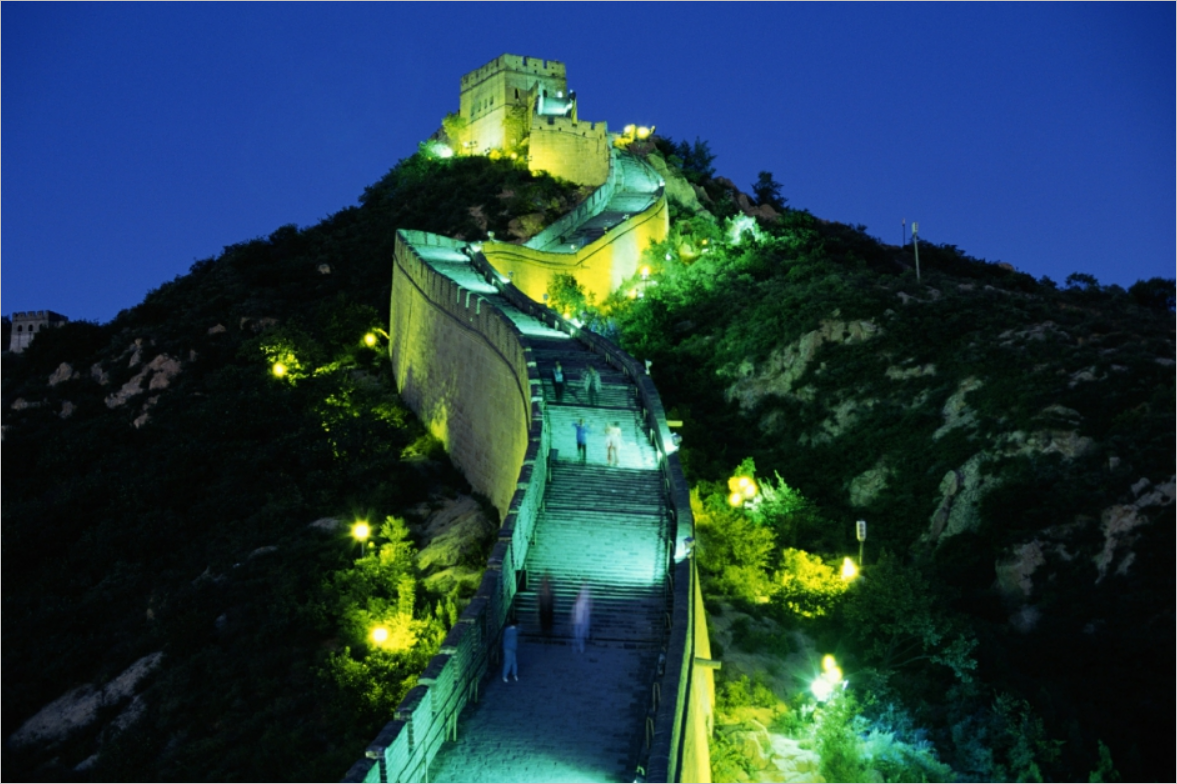The saying “He who has never been to the Great Wall is not a true man” vividly illustrates the influence of the Great Wall in China and even the world. Domestic and foreign tourists come here to admire its beauty and foreign political leaders visiting China also have to visit the Great Wall and marvel at its magnificence. In a sense, the Great Wall has become a symbol of the Chinese nation.

The autumn scenery of the Great Wall at Badaling.
The Great Wall is a totem of the Chinese people. Its construction has gone through several different periods in ancient times. As early as the Spring and Autumn Period and the Warring States Period, each state built walls within its own jurisdiction for mutual defense. Among them, the three states of Qin, Zhao, and Yan were adjacent to the powerful nomadic tribe of the northern China, the Xiongnu. In order to resist the invasion of the Xiongnu, defend the safety and production of the people, they each built a wall in the north and stationed troops. In 221 BC, Emperor Qin Shi Huang destroyed the six kingdoms and unified China. In order to guard against the Xiongnu, he sent the general Meng Tian to build the Great Wall, connecting the walls of Qin, Zhao, and Yan together, and expanding them, to form a magnificent Great Wall stretching from Lintao County in the west to Liaodong in the east, known as the “Ten Thousand Li Great Wall”. After the Qin Dynasty, many dynasties such as the Han and the Northern Wei built or expanded the Great Wall, among which the Han and the Ming Dynasties had the largest scale. In the early years of the Han Dynasty, the Xiongnu constantly invaded the northern part of the Han Dynasty. In the 2nd century BC, Emperor Wu of Han sent troops to drive the Xiongnu northward and further strengthened the northern defense. He repaired the Great Wall along the Yellow River, and extended it more than 1,000 kilometers to the west, all the way to Jiuquan and Dunhuang in the west, and reached as far as Yanzhe (now the Lop Nur in Xinjiang). This section of the Great Wall is called the Hexi Great Wall. In 1368 AD, Ming Taizu Zhu Yuanzhang sent the general Xu Da to supervise the construction of a section of the Great Wall from Gubeikou to Shanhaiguan. Over the next hundred years, the Great Wall was extensively repaired 18 times. The Ming Great Wall starts from Hushan in Dandong, Liaoning, and ends at Jiayuguan in Gansu, with a total length of 6,350 kilometers. The Ming Great Wall has three characteristics: complete structure, sound management, and strict layout. The Great Wall at Badaling and Mutianyu, known today, belong to the Ming Great Wall.

Great Wall Enemy Tower
Great Wall of Badaling
Badaling is a pass in the rugged Jundu Mountains. The Great Wall at Badaling was an important outpost of Juyong Pass, known as “the danger of Juyong is not in the pass, but in Badaling”. This has been a transportation hub to Shanxi, Inner Mongolia, and Zhangjiakou since ancient times.
The fortress at Badaling is trapezoidal in shape, narrow in the east and wide in the west. It was built in the 18th year of Ming Emperor Hongzhi (1505), and was renovated during the reigns of Jiajing and Wanli. The fortress has two gates, east and west. The east gate is inscribed with the words “Juyong Outside Garrison”, carved in the 18th year of Jiajing (1539); the west gate is inscribed with the words “North Gate Lock Key”, carved in the 10th year of Wanli (1582). Both gates are made of brick and stone, with platforms on the lintels. There are passages on the north and south sides of the platform that connect to the fortress walls. There are battlements around the platform. The Beijing-Zhangjiakou Highway passes through the gates and is the throat to Beijing.
The North Eighth Tower is the highest tower of the Great Wall at Badaling, with an altitude of 888.9 meters. It is also unique in its architecture. It used to be possible to climb up the enemy’s tower to view the scenery, but now the tower gate is closed to protect the relics.
From the fortress tower to the highest point of the South Peak, the wall is 685.8 meters long, with a height difference of 142.4 meters. In particular, between the third and fourth towers on the south side, the ridge is narrow and the mountain is steep, with the Great Wall winding for more than 400 meters. The most dangerous part of the wall, with a slope of about 70 degrees, is almost straight up and down. The South Peak of the Great Wall is the highest point at the fourth tower on the south side, with an altitude of 803.6 meters. From the tower, you can see the Great Wall winding along the ridge from southwest to northeast, like a majestic dragon.

Mùtianyu Great Wall
Mùtianyu Great Wall
Mutianyu is located in Huairou District, northeast of Beijing. It has been a military stronghold guarding Beijing since ancient times. This section of the Great Wall is connected to Juyongguan in the west and Gubeikou in the east, and it was one of the important passes in the Ming Dynasty, known as the “dangerous mountain pass”. The Mutianyu scenic area is surrounded by mountains, with a forest coverage rate of over 90%. Compared with Badaling, it is slightly less magnificent but more beautiful. In 2011, it was promoted to a national 5A-level scenic spot as part of the expansion of the Badaling Great Wall scenic area.
The gates on both sides of the Mutianyu Great Wall rise along the mountain ridge and flip along with the terrain. There are also fortifications in the dangerous areas. When repairing the Mutianyu Great Wall in the Ming Dynasty, crenels were added to both sides of the wall top, and rolling stone holes were newly set up at the same time, which could be used for attack and defense. The “handle tower” was also built to control the high point and reduce the threat to the main city. Starting from the left side of the main gate of the Mutianyu Great Wall, it flips along with the terrain and runs towards the distance. The Great Wall extends straight from the mountainside to the mountaintop, and after building an enemy building on the mountaintop, it suddenly descends, flips back to the mountainside, and then rises sharply to an altitude of more than 940 meters. After a big turn, it looks like a bull’s horn, majestic and magnificent, so people call it the “bull’s horn edge”. The Great Wall continues to extend forward from the “bull’s horn edge”, passing through a place called “Jiankou”, where there is a mountain peak that has reached an altitude of 1044 meters, and both sides are steep as if they were cut. When building the Great Wall, it was necessary to pass through the cliff on the outside of the mountain top, but this high point could not be left outside. Using bricks or wood was obviously not feasible. Therefore, the clever craftsmen used two large iron beams to support the cliff, and then piled bricks and stones on top of them. This method is extremely rare in the entire history of the construction of the Great Wall.

Mutianyu Great Wall Night View
On the east side of the Mutianyu Great Wall, the wall originally stretched northeast along the mountain range. However, at a certain enemy tower, it suddenly split off for more than 1,000 meters and diverted southeast, reaching the end of the mountain range and ending abruptly at a solid and magnificent enemy tower. This over 1,000-meter section of the Great Wall is known as the “Bald Tail Wall”. At this point, the wall formed three sections that converged at one tower, creating a “view of a giant dragon observed from three sides”.
There are relatively few visitors to the Mutianyu Great Wall, and foreign tourists prefer to come here. There is a sense of tranquility and beauty here. For backpackers, the Mutianyu Great Wall and the undeveloped Jiankou Great Wall are more tempting.
Reminder:
1. JuYongGuan Great Wall, Water Great Wall, and Hongye Valley are not the real World Heritage Site “Badaling Great Wall”.
2. The Great Wall is steep and dangerous. Please climb safely with your climbing shoes or sports shoes. If you plan to stay overnight near the Great Wall, remember to bring warm clothes.